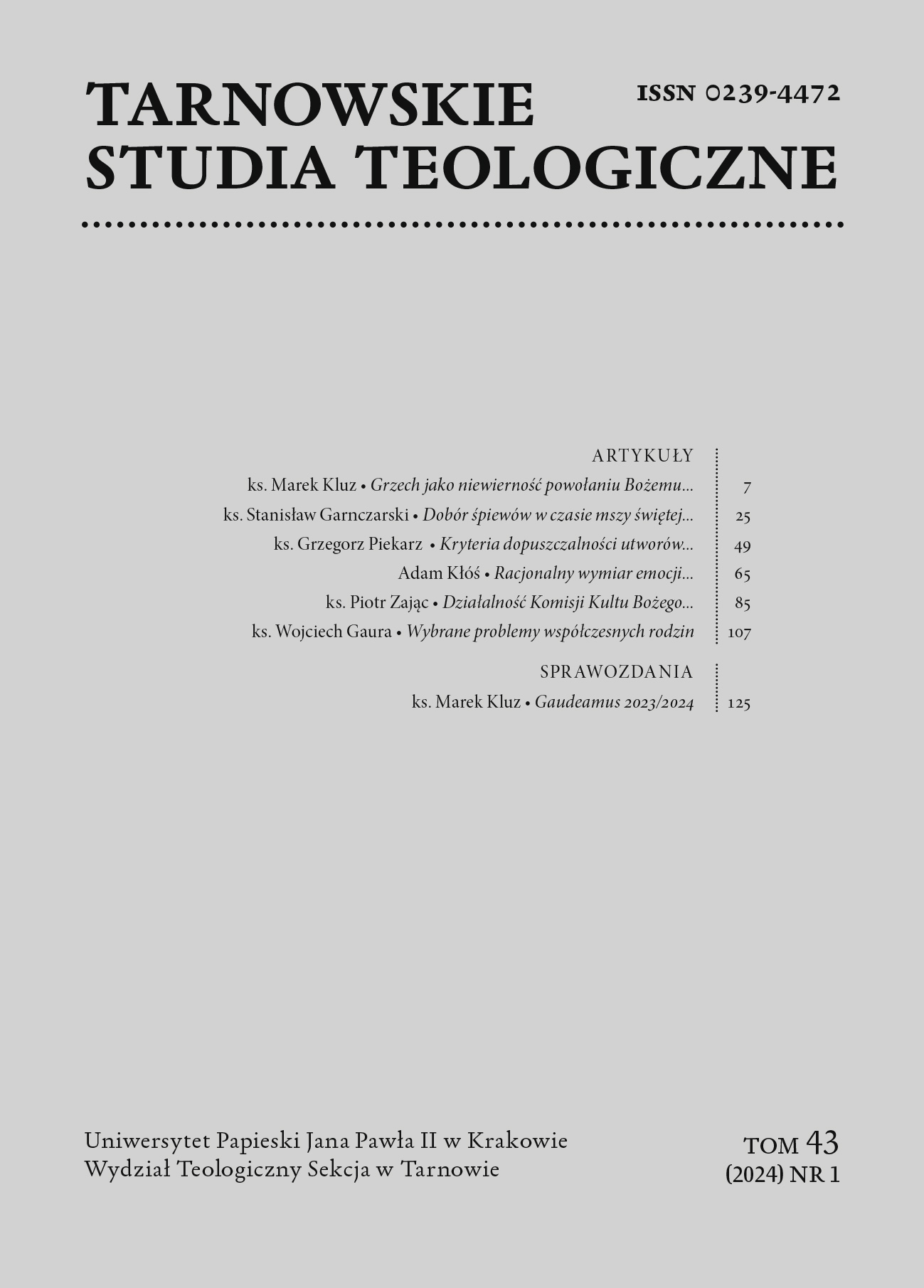Criteria for the admissibility of musical works for the liturgy in teaching Church after Vatican II
DOI:
https://doi.org/10.15633/10.15633/tst.43103Keywords:
sacred music, liturgical music, admissibility criteria, liturgyAbstract
The article searches for the criteria of admissibility of musical works to the liturgy available in the teaching of the Catholic Church since the Second Vatican Council. It attempts at answering the question of what determines the fact that certain forms of Gregorian chant, sacred folk singing, choral and solo vocal music as well as instrumental music can be admitted to the liturgy while other forms cannot. In view of quite a large number of chants of doubtful sacred or even secular value appearing in the liturgy, defining these criteria and recalling them seems to be a necessity so that the liturgy does not lose its sacred character.
References
Instrukcja Episkopatu Polski o muzyce liturgicznej po Soborze Watykańskim II, w: Prawodawstwo muzyki liturgicznej, red. A. Filaber, Warszawa 1997, s. 82–90.
Instrukcja Konferencji Episkopatu Polski o muzyce kościelnej, www.episkopat.pl/instrukcja-konferencji-episkopatu-polski-o-muzyce-koscielnej (08.03.2022).
Jan Paweł II, Encyklika Ecclesia de Eucharistia, 17.04.2003.
Ogólne wprowadzenie do mszału rzymskiego, Poznań 2006.
Pawlak I., Muzyka liturgiczna po Soborze Watykańskim II w świetle dokumentów Kościoła, Lublin 2000.
Siedlecki J., Śpiewnik kościelny, Kraków 2017.
Sinka T., Zarys liturgiki, Kraków 1997.
Sobór Watykański II, Konstytucja Sacrosanctum Concilium, 4.12.1963.
Waloszek J., Teologia muzyki. Współczesna myśl teologiczna o muzyce, Opole 1997.
Śpiewnik liturgiczny, red. K. Mrowiec, Lublin 1991.
Święta Kongregacja Kultu Bożego, Instrukcja Liturgicae instaurationes, 5.09.1970.
Święta Kongregacja Obrzędów, Instrukcja Musicam sacram, 5.03.1967.
Downloads
Published
Issue
Section
License

This work is licensed under a Creative Commons Attribution 4.0 International License.
Authors who publish with this journal agree to the following terms:
- Authors retain the copyright and full publishing rights without restrictions, and grant the journal right of first publication with the work simultaneously licensed under a Creative Commons Attribution 4.0 International License that allows others to share the work with an acknowledgement of the work's authorship and initial publication in this journal.
- Authors are able to enter into separate, additional contractual arrangements for the non-exclusive distribution of the journal's published version of the work (e.g., post it to an institutional repository or publish it in a book), with an acknowledgement of its initial publication in this journal.
- Authors are permitted and encouraged to post their work online (e.g., in institutional repositories or on their website) prior to and during the submission process, as it can lead to productive exchanges, as well as earlier and greater citation of published work (See The Effect of Open Access).

